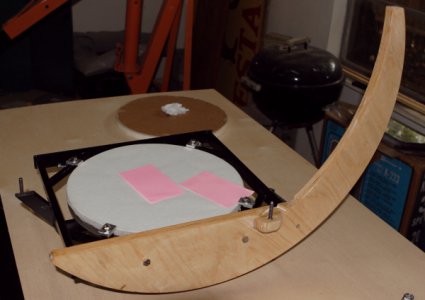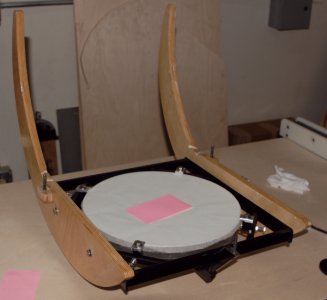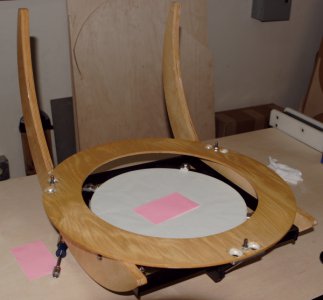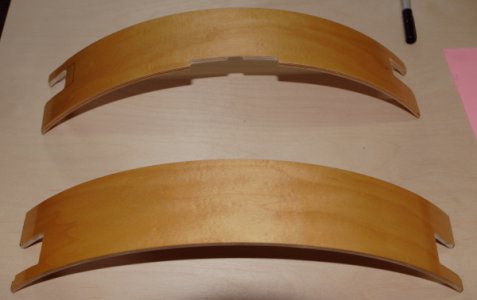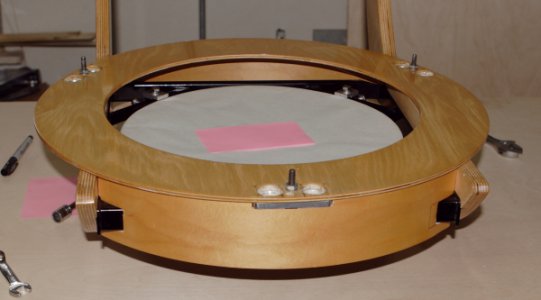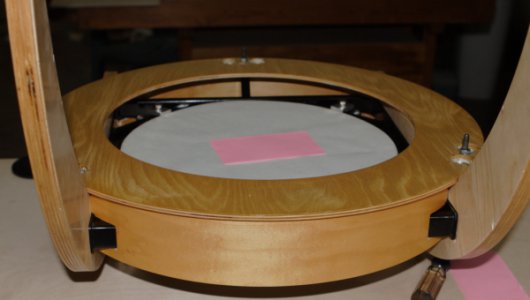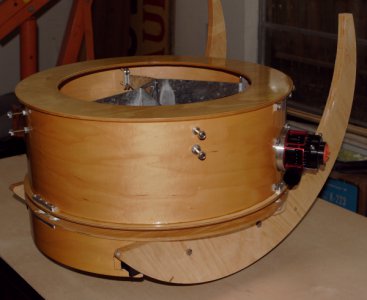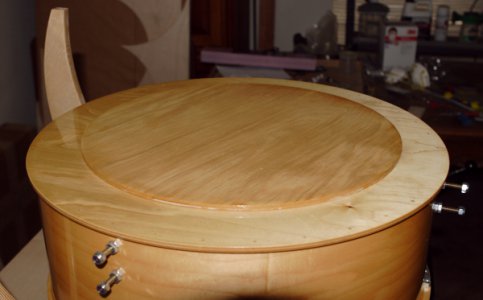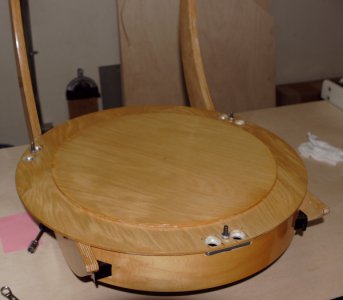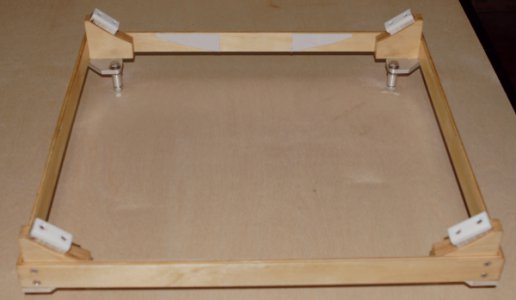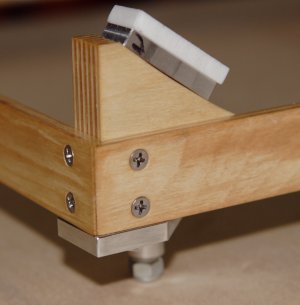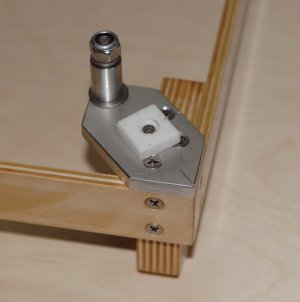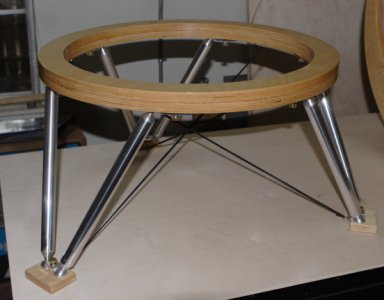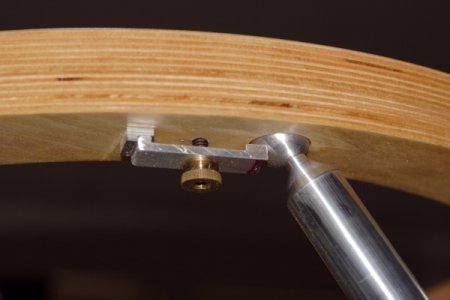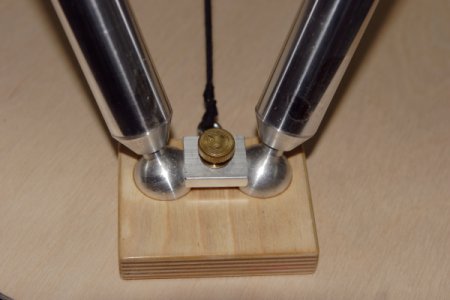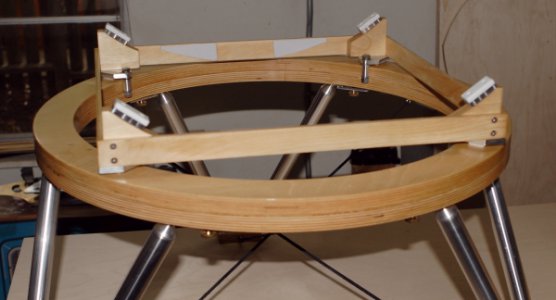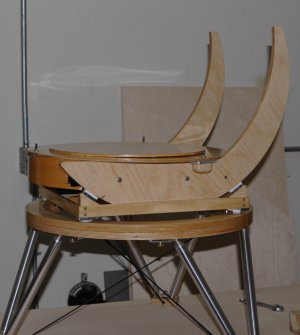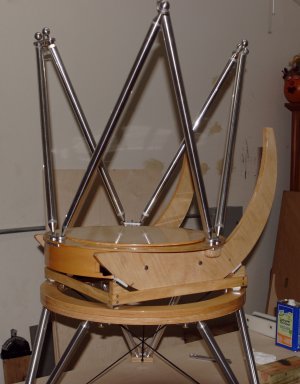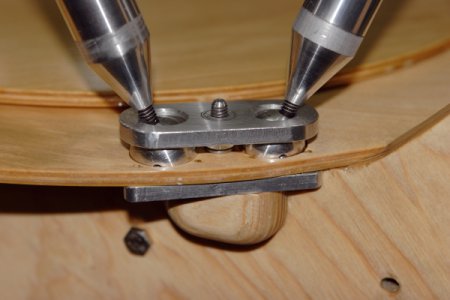- Joined
- Nov 17, 2017
- Messages
- 1,525
Next, we flip the mirror over and attach the mirror "clips". These clipt prevent the mirror from falling forward out the frame when the frame is at any angle (including pointing down.)
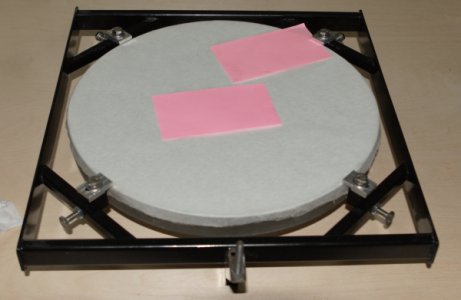
The clips were "adjusted" until a sheet of paper could clear from the top and rotate over the edge of the mirror, simply from the stiffness of the paper itself. The paper measures 0.004,5" thick. THe overhang is very tiny compared to mirror cells that allow the mirror to move to a greater degree.
By the way:: 0.004" was chosen as the clearance of the mirror at the BTs because the differential expansion/contraction of the mild steel frame and the sperMax glass is 0.003" from 100º F to 0º F. I, personally, will not be observing at less than 0º F !

The clips were "adjusted" until a sheet of paper could clear from the top and rotate over the edge of the mirror, simply from the stiffness of the paper itself. The paper measures 0.004,5" thick. THe overhang is very tiny compared to mirror cells that allow the mirror to move to a greater degree.
By the way:: 0.004" was chosen as the clearance of the mirror at the BTs because the differential expansion/contraction of the mild steel frame and the sperMax glass is 0.003" from 100º F to 0º F. I, personally, will not be observing at less than 0º F !


